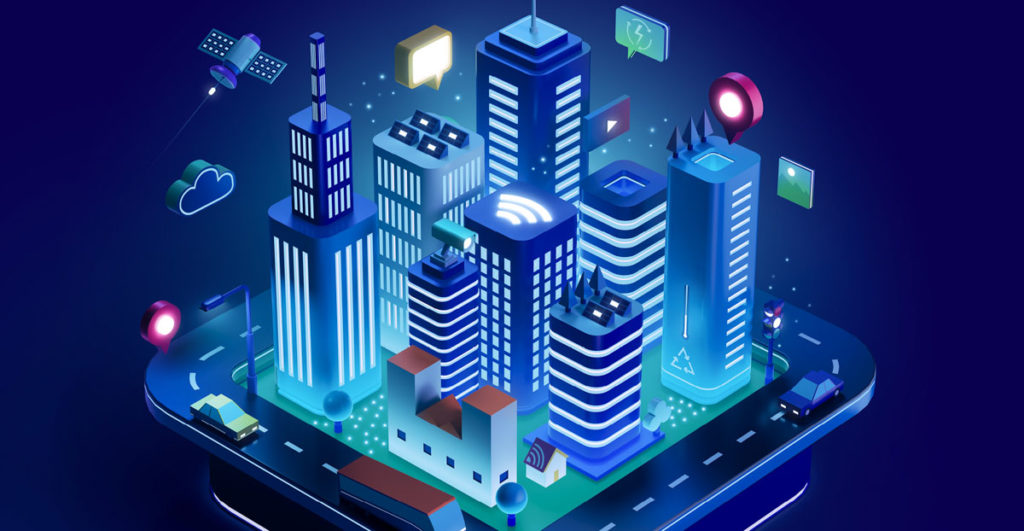
Cloud computing, at its core, refers to on-demand access to computing services including servers, storage, databases, networking, software, analytics, and intelligence, all through the Internet. For organizations that continuously strive to improve network and application performance, shifting their computing processes to this centralized “cloud” has been able to reduce both capital costs and operational expenses, scale operations and resources, and permit flexibility in terms of data access. Implementing cloud computing has become critical for service providers as they pave the way in minimizing costs while also improving the customer experience, evolving their networks to fuel digital innovation and efficiency.
However, cloud computing is not without its disadvantages. The ability to store and manage the massive amounts of data generated by IoT devices through centralized cloud computing has become increasingly difficult, leading to growing operational costs and performance issues. “Moreover, less than one-third of the data generated from these machines is considered high-value from a data processing perspective.”
The Next Step: Edge Computing
Moving and processing relevant data away from the centralized cloud closer to where it is actually used, at the edge of the wide area network (WAN), would increase data security, improve efficiency, conserve computing resources, and reduce latency.
Edge computing does exactly this: it decentralizes data processing and lowers dependence on the cloud by bringing functions like computation and data storage out to the edge of the wide area network (WAN) rather than running them at a distant data center. Placing these functions closer to the applications that rely on them allows for real-time data processing. This ultimately increases data security, conserves computing resources, and drastically reduces bandwidth costs and latency. As such, edge computing serves to dramatically improve network efficiency, since data is no longer being transmitted back and forth from a data center potentially thousands of miles away.
Edge Computing Use Cases
The automotive industry has invested billions of dollars into researching autonomous vehicles, hoping to develop the technology that will not only send driverless cars soaring down the road, but also make them the norm. Autonomous vehicles require the ability to amass, interpret, and communicate streams of data concerning surrounding conditions, directions, maintenance information, and other vehicles on the road. Transmitting this data back and forth through a traditional cloud, accompanied by a flood of information from millions of other IoT devices like cell phones, computers, and other driverless cars, would undoubtedly put a strain on bandwidth that can severely compromise the safety of passengers if the system were to lag. Edge computing, run through a network of strategically arranged edge data centers, allows autonomous vehicles to exchange critical information with virtually no latency, resulting in a reliable and safe journey.
Moreover, the practicality of edge computing is not limited to the autonomous cars that are expected to one day dominate the road; edge computing’s value encompasses the very roads and cities that these cars will drive on. Smart cities, or urban areas that use various IoT sensors to collect vast amounts of data concerning “traffic patterns, utility usage, and key infrastructure,” could rely on edge computing to report changes in real-time. Unlike traditional cloud computing, edge computing can transform the handling of city operations into something more dynamic, responsive, and instant.
The manufacturing and healthcare industries serve to benefit from edge computing as well, particularly in remote areas with low bandwidth. Edge computing, with its promise of constant access to current data, could mean a world of a difference when it comes to crucial machine maintenance or understanding the newest updates to an emergency patient’s medical records.
The Challenge and Fujitsu Network Communications’ Solution
Despite its exciting potential, edge computing certainly comes with its share of unique challenges. The variety of hardware and software needed to establish a secure edge computing system, paired with the lack of a specific and universally standardized setup process, means that designing, integrating, and maintaining such a complex system can become a thorny path.
Here is where Fujitsu Network Communications’ edge computing expertise comes in handy. As a forward-thinking leader in edge computing services, Fujitsu can effectively analyze client needs, design a personalized system, integrate the equipment, and help manage it going forward. By ensuring that you have access to the advantages of edge computing, Fujitsu Network Communications promises to help propel you to further success.